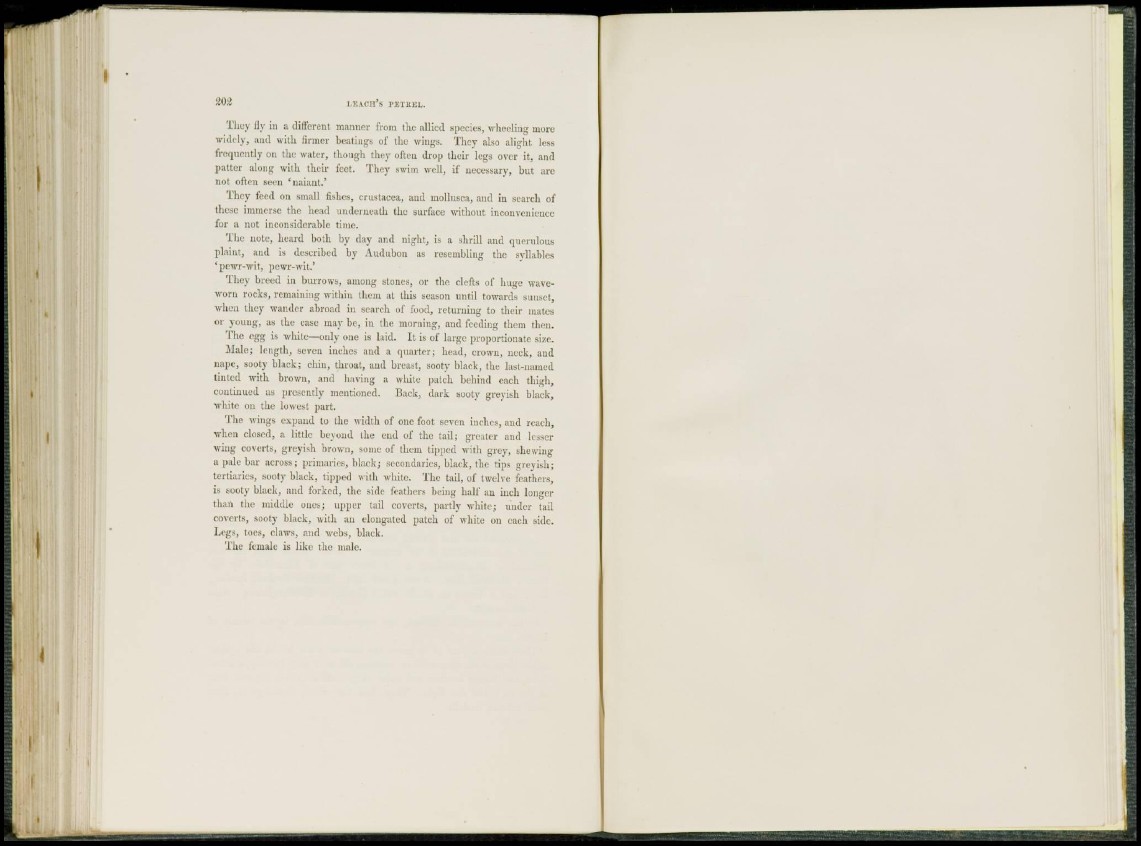
803 LEACH 6 PETBEL.
They fly in a different manner from the allied species, wheeling more
Widely, and with firmer beatings of the wings. They also alight less
frequently on the water, though they often drop their legs over it, and
patter along with their feet. They swim well, if necessary, but are
not often seen 'naiant.'
They feed on small fishes, Crustacea, and mollusca, and iu search of
these immerse the head underneath the surface without inconvenience
for a not inconsiderable time.
The note, heard both by day and night, is a shrill and querulous
plaint, and is described by Audubon as resembling the syllables
'pewr-wit, pewr-wit.'
They breed in burrows, among stones, or the clefts of huge waveworn
rocks, remaining within them at this season until towards sunset,
when they wander abroad in search of food, returning to their mates
or young, as the case may be, in the morning, and feeding them then.
The egg is white—only one is laid. It is of large proportionate size.
Male; length, seven inches and a quarter; head, crown, neck, aud
nape, sooty black; chin, throat, and breast, sooty black, the last-named
tinted with brown, and having a white patch behind each thigh,
continued as presently mentioned. Back, dark sooty greyish black,
white on the lowest part.
The wings expand to the width of one foot seven inches, aud reach,
when closed, a little beyond the cud of the tail; greater aud lesser
wing coverts, greyish brown, some of them tipped with grey, shewing
a pale bar across; primaries, black; secondaries, black, the tips greyish;
tertiaries, sooty black, tipped with white. The tail, of twelve feathers,
is sooty black, and forked, the side feathers being half an inch longer
than the middle ones; upper tail coverts, partly white; under tail
coverts, sooty black, with an elongated patch of white on each side.
Legs, toes, claws, and webs, black.
The female is like the male.